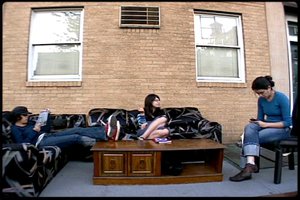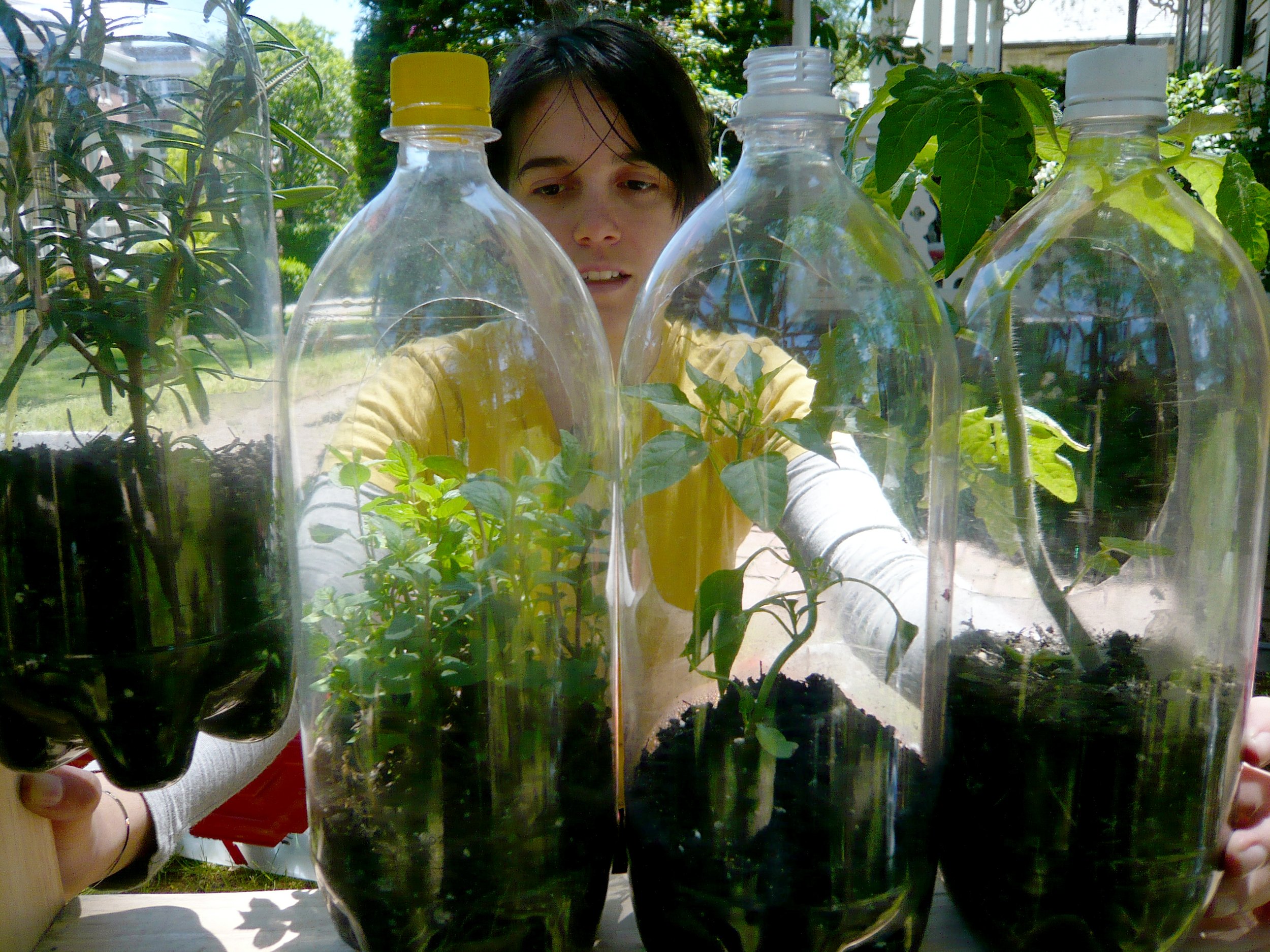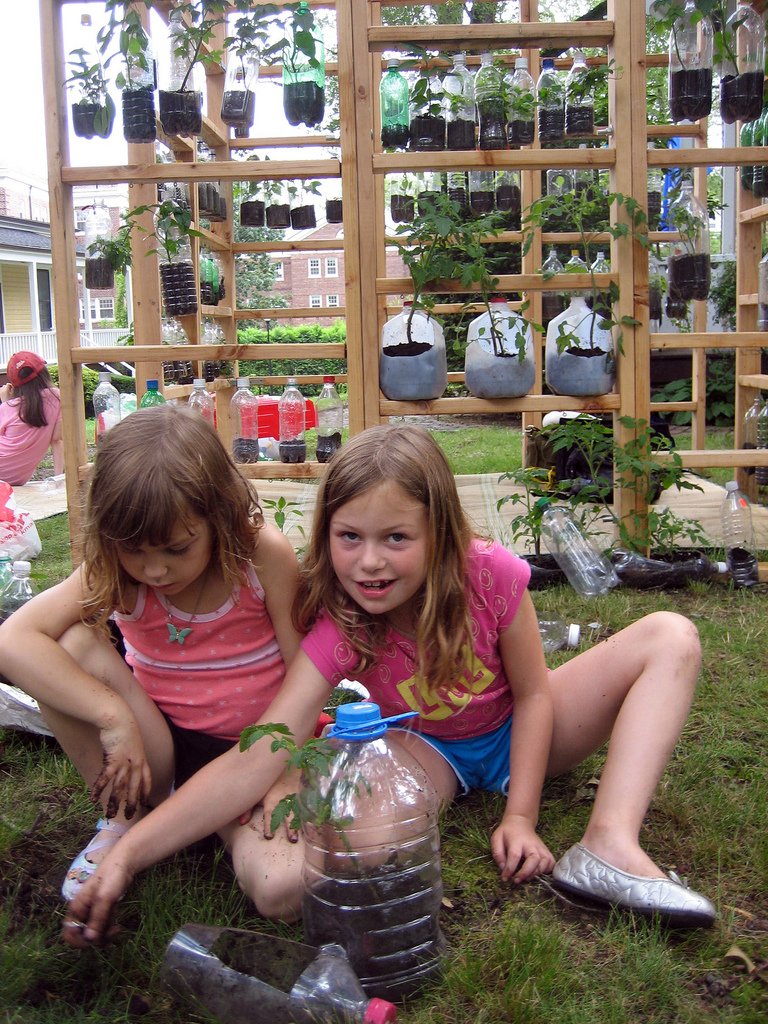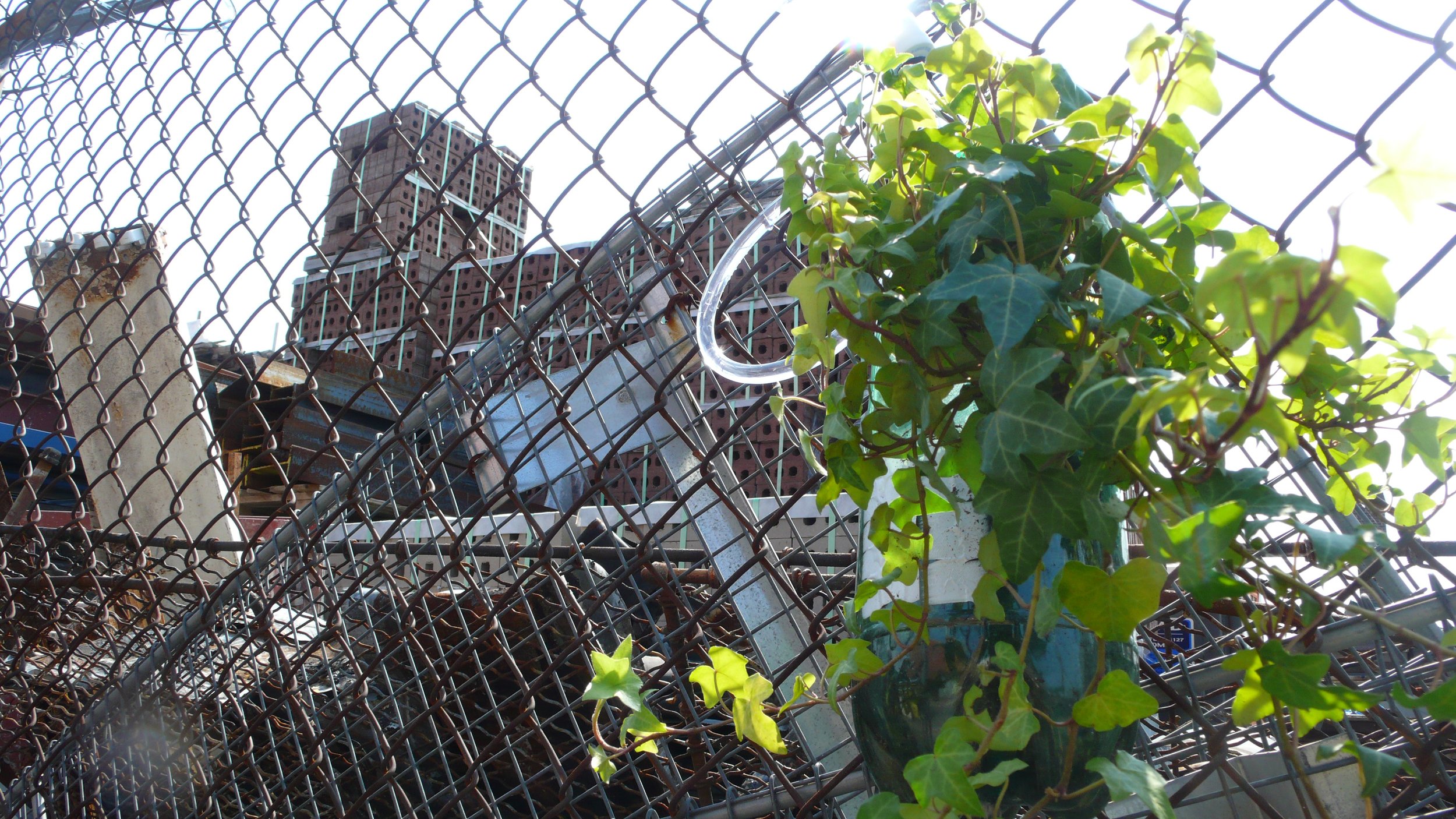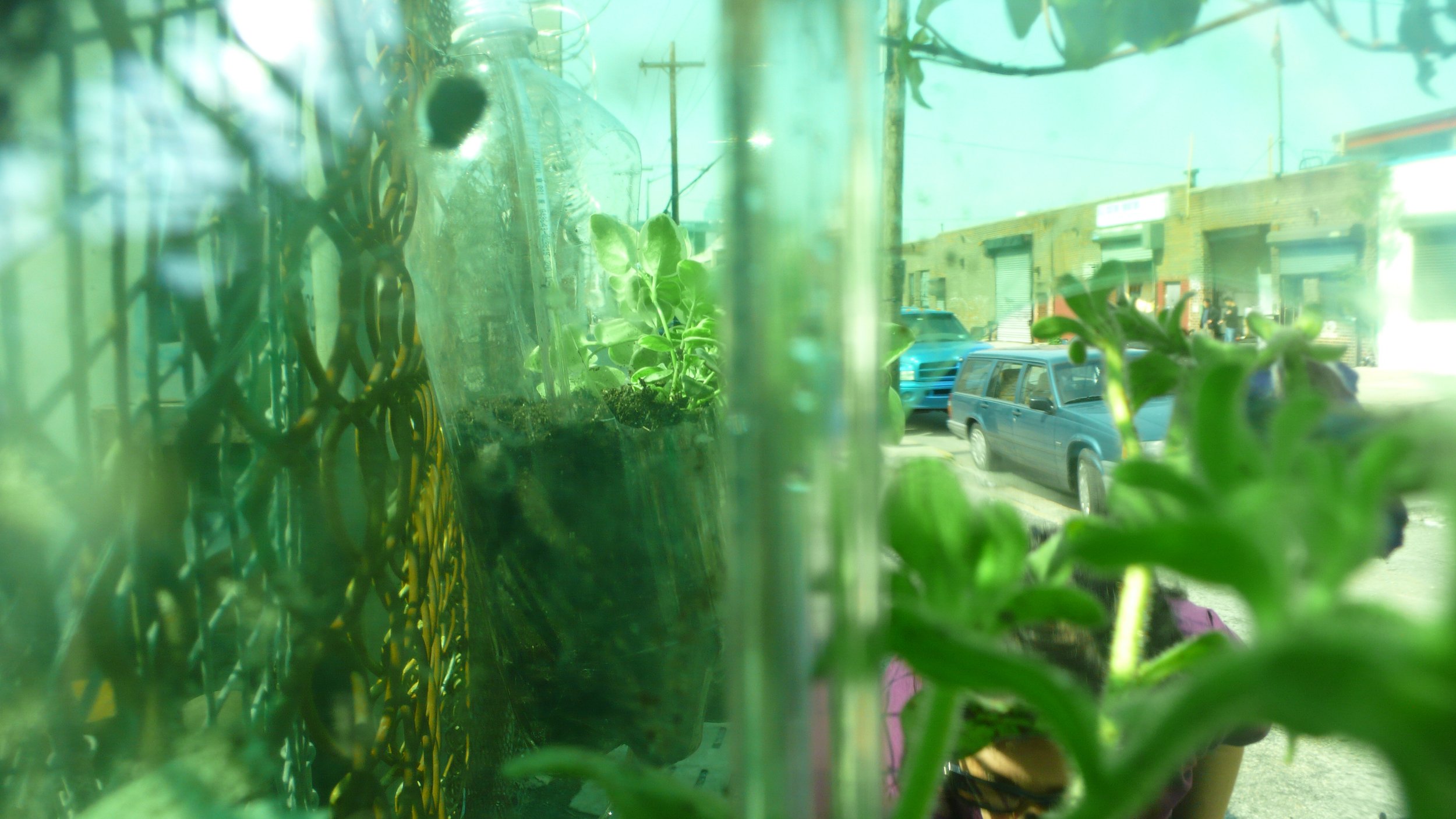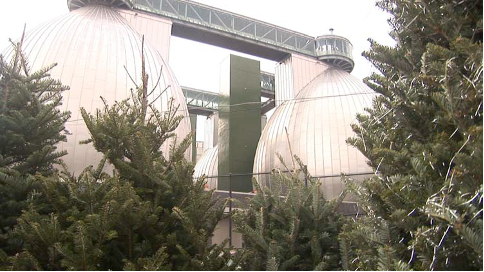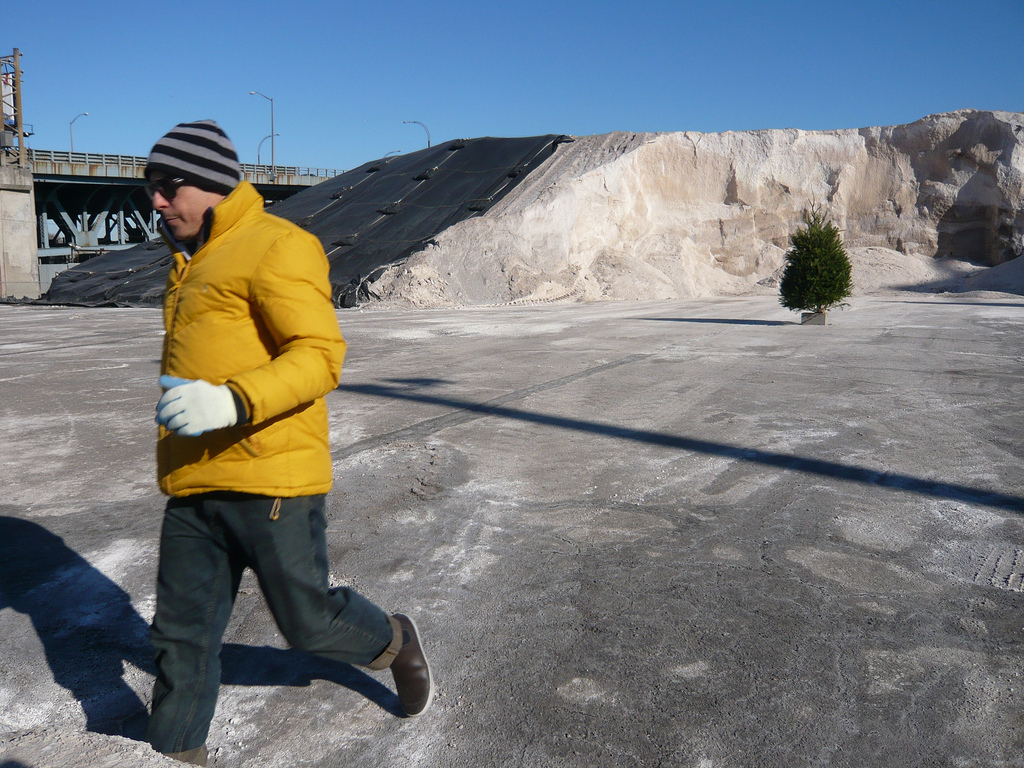The Urban Homesteading Project (Laura Chipley, Francisca Caporali and Pilar Ortiz) was a collaborative project that explored ways to promote positive social interactions in public space by creating temporary dwellings out of discarded, donated and exchanged materials.
By making representative living situations and inviting community members to participate in these fictional spaces, this project sought to transform the apparent physical configuration of a space and its social and symbolic dimensions.
Collectively observing movements on the street, manifestations of change in a neighborhood and interactions between the people who live, work or simply pass by, unfolds the multiple layers of a place. Each homestead was an investigation of community, available resources and models of sociability in the contemporary city.
Mountains of garbage on city sidewalks and overflowing dumpsters often inspire a sense of foreboding. Viewed from afar, a pile of trash connotes a lack of care, and for some people, is a token of the human propensity toward wastefulness that will likely play a part in our undoing as a species. In New York City, we are particularly well known for our trash output, both in the variety of reusable and sometimes valuable things we throw away, and in the sheer volume of waste produced here every single day. The emotional, artistic and practical applications of garbage, and the ways in which garbage provides both insight into our values and carries the potential to foster social connections. The extended life of personal belongings that once furnished the intimate space of a home or a body, serve to connect members of urban communities, often fragmented by cultural misunderstandings and economic inequality.
Sidewalk (2007)
The Urban Homesteading Project created a communal living space on the sidewalk in Brooklyn for 24 hours, starting at dawn on Saturday, November 23rd. After scavenging in the garbage for two hours on the previous day, we filled a U-haul with enough reusable "refuse" to furnish half a city block. In the pre-dawn hours on Saturday we unloaded the truck onto the sidewalk on Union Avenue.
We invited community members to contribute unwanted household items and to live in our homestead for however long they could endure the cold. Over neighbors and passersby joined us for movie-watching, cooking, napping and lively discussions about street life, public space and the utilization of available resources.
Summer Homestead (2008) A site-specific installation on Governors Island by Laura Chipley, Francisca Caporali and Pilar Ortiz (The Urban Homesteading Project)
Summer Homestead was a transformative living structure designed to provide multi-sensory experiences through interaction with natural and synthetic elements.
Over nine weeks, a wooden structure was gradually insulated with salvaged plastic bottles, re-purposed as receptacles for organic life. Within each bottle, living plants are cultivated in either soil or water. Each species of plant was selected for its fragrant, edible or shade-giving qualities.
Viewers were invited to donate plastic bottles and participate in the planting process. As more bottles were incorporated, Summer Homestead took shape as a collaboratively built public space. At the exhibition's end the plants were disbursed among the viewers.
Summer Homestead was exhibited as part of Emergence: Creative Pioneers in an Uncharted Territory.
UHP GREENpoint (2009)
Recycled structures made out of plastic bottles containing plants were hung on fences and installed in empty “green” spaces on the sidewalks on an industrial street in Greenpoint, Brooklyn. We collaborated with residents and local businesses to collect bottles, build the structures and care for the plants. In a neighborhood that suffers from environmental degradation and a lack of designated public space for a cooperative "greening" efforts, UHP - GREENpoint* is an opportunity for a community of residents, business owners and artists to make an impact on the environment in which we live and work. UHP - GREENpoint seeks to encourage grassroots, collective solutions to neighborhood issues, and to promote a larger dialogue about the ways in which waste management and environmental sustainability may be addressed through direct action. UHP - GREENpoint was created with a grant from F.E.A.S.T.
Forest (2010)
Forest was a mobile installation in which Christmas trees, salvaged from the garbage in the post-holiday season, were arranged to mimic natural forests in industrial zones located along the Newtown Creek in Greenpoint, Brooklyn and Long Island City, Queens.
The juxtaposition of discarded and subsequently resurrected trees against a backdrop of heavy industry and a polluted and barren waterway was an attempt to simultaneously address material waste and ecological devastation, while exploring the possibilities of rearranging the human impact on a place through the use of repurposed garbage. At the end of the installation, the Christmas trees were recycled into mulch in a local park.


